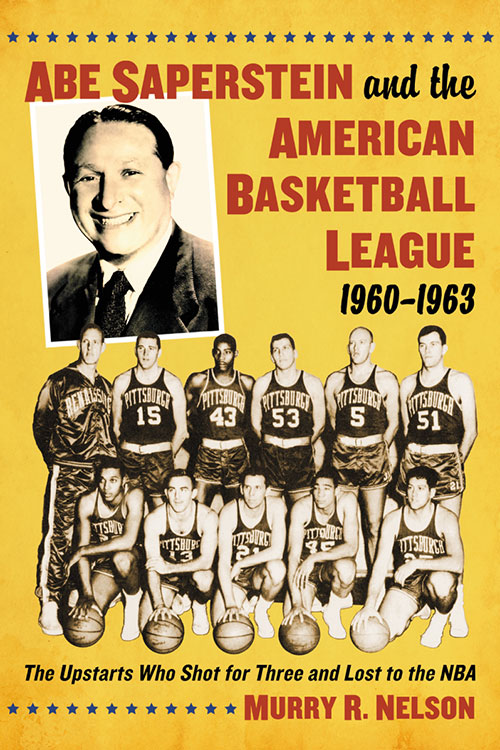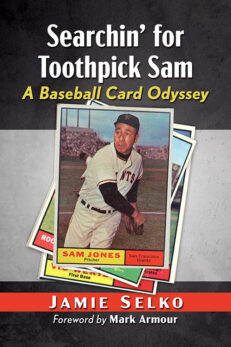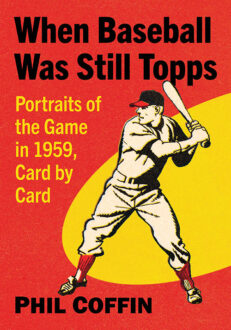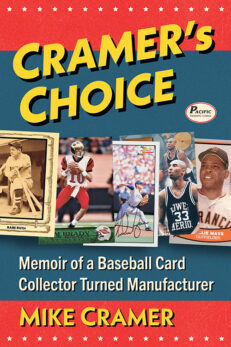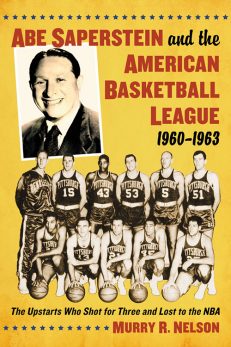Acknowledgments ix
Introduction: An American Basketball League Overview 1
One. The ABL—the “Run Up” 13
Two. The Formation of a New League, Rules, Constitution, Referees and More 29
Three. ABL Financing—Expectations, Hopes, Realities 37
Four. The Exiles and the Deserters 51
Five. The Coaches and the Starting Fives 70
Six. Chicago, Battleground of the ABL and the NBA 97
Seven. The 1961-1962 Season (First Half) 109
Eight. The 1961-1962 Season (Second Half) 125
Nine. The ABL Begins a Second Year, 1962-1963 139
Ten. The ABL, and Then What? 158
Appendix 1. Team Standings, 1961-1962 167
Appendix 2. ABL Scoring, 1961-1962 168
Appendix 3. Team Standings, 1962-1963 177
Appendix 4. ABL Scoring, 1962-1963 178
Appendix 5. ABL Most Valuable Player and All-League Teams, 1961-1962 182
Chapter Notes 185
Bibliography 197
Index 207
Review Fix chats with author Murry Nelson, who discusses the creative process behind his book Abe Saperstein and the American Basketball League, 1960–1963: The Upstarts Who Shot for Three and Lost to the NBA and his other work on basketball, as well as what the future holds for him.
Review Fix: What inspired this book?
Murry Nelson: Each of my books was inspired by a desire to read and know more about the topics and an inability to find a book that addressed each of these topics. I had been interested in the NBL since I’d first read about the BAA-NBL merger, probably in the late 1960s, but was inspired to write the book after writing a letter to Sports Illustrated trying to correct their perpetuation of the NBA’s myth that their 50th anniversary was 1996, since the BAA was formed in 1946. As I noted in the letter, either the anniversary should have been 1987 when the NBL began or 1999 when the NBL merged with the BAA. Dick Triptow, a former NBL great and teammate of George Mikan on both teams at DePaul University and the Chicago Gears of the NBL contacted me to applaud my letter and support exactly what I had written. With his impetus and assistance in visiting archives, talking to former players and reading newspapers from former NBL sites like Oshkosh and Sheboygan, I determined to write this book.
As for the ABL book, I grew up in Chicago and was aware of the ABL’s existence in the 1960s, but was more tied to the Chicago Packers, who joined the NBA in 1961 because of knowing the owner of the team, Dave Trager. Still, Connie Hawkins, the 3-point shot and the mere existence of the league intrigued me and I wanted to know more. The only way to do that was to do the research and the book emerged from that.
Regarding the Big Ten volume, I had grown up, as noted earlier, in Chicago and the Big Ten was my college league, as it were. I wanted to kind of relive those early years of high school attending Northwestern games with high school teammates and then following the league’s growth, but, again, there was no book that did this, so I did the research out of my own interest and the book fell into place.
Review Fix: What was the research process like?
Nelson: All three books relied on extensive reading of microfilm newspapers. For the ABL, they were the Chicago Tribune, PittsburghPost-Gazette, Kansas City Star, Kansas City Time and Philadelphia Inquirer. For the NBL, I used the Chicago Tribune, but smaller papers from a number of the small cities of the NBL like the OshkoshNorthwestern, the Rochester Democrat and Chronicle, the Akron Beacon Journal, the Denver Post, the Minneapolis Star, the Indianapolis Star, the Fort Wayne News-Sentinel, the Toledo Blade and the Chicago Defender. For the Big Ten, the Chicago Tribune was most utilized, but also the New York Times, the Des Moines Register, the Minneapolis Star, the Detroit News and the Daily Illini. Most were online and were easy to use for finding supporting documents after finding stories in the Chicago Tribune microfilm copies. I also utilized a number of annual basketball magazines that I had saved for more than fifty years, updating these annually. Interviews with former players, coaches and team personnel, including owners and league officials, were also vital. For both the ABL and NBL books I visited a number of archival sites, including the Naismith Memorial Basketball Hall of Fame. The Abe Saperstein papers in the archives at the Briscoe Center for American History at the University of Texas were key. For the NBL, I used archives in Oshkosh, Sheboygan, Akron and the HOF. The Big Ten said it did not keep such archival data so I had to rely on archives from the various Big Ten institutions and archivists there. Interviews were done in person, by phone and via email for all three books. I did get a couple great letters, one of which was from John Wooden, discussing his play in the NBL and its predecessor, the Midwest Conference.
Review Fix: Any real trials and tribulations during the writing process?
Nelson: The writing was like a reward for all the research data gathered. I wanted to read the story of each league, but I had to write it to read it. The biggest tribulation was probably having to limit my writing each day because of being tired, but, lying in bed each night wondering what would happen next in “the story” that I was telling.
Review Fix: What did you learn during the writing of the book that you didn’t expect?
Nelson: In the NBL book, I was surprised by the accurate memories of those individuals whom I interviewed. Almost always, their memories coincided precisely with the data that I had gathered from other sources and their insights added so much color and insight to the newspaper accounts.
Review Fix: What are your goals for this book?
Nelson: My goals for the NBL book were simple, initially, i.e. to correct the NBA myths about the origin of the NBA and to give the NBL players and teams the respect and attention that they deserved. As for the ABL, I wanted to both learn more about the league’s operating and to clear up the confusion that many people had with the ABL and the ABA.
Review Fix: Who do you think will enjoy it the most?
Nelson: All three books are heavily footnoted, but that is the scholarly aspect. I think a basketball aficionado would be the prime audience, i.e. someone interested in the growth and development of basketball over the years. The writing style is pretty straightforward and the books don’t require lots of baseline knowledge as much as an interest in learning more about basketball history, as just noted.
Review Fix: How does your background help and hinder your creative process?
Nelson: I have been interested in basketball history since high school and that interest is probably the most important part of writing such a book. I also have a social science background with degrees in sociology, anthropology, education and a year of law school, all of which helps me to contextualize the books with the larger framework of American history at the time that the books are describing.
Review Fix: What’s next for you?
Nelson: I am completing a second volume on Big Ten basketball from 1972-1992, which I hope McFarland will publish in 2020.
Review Fix: Anything else you’d like to add?
Nelson: I cannot say enough about the people who have helped me write these books-librarians, archivists, editors, but mostly the former players. Interviewing them was a thrill and an honor. Dick Triptow became a valued friend through the NBL work and John Isaacs of the New York Renaissance team also became a close confidant and critic. I miss them both very much.

